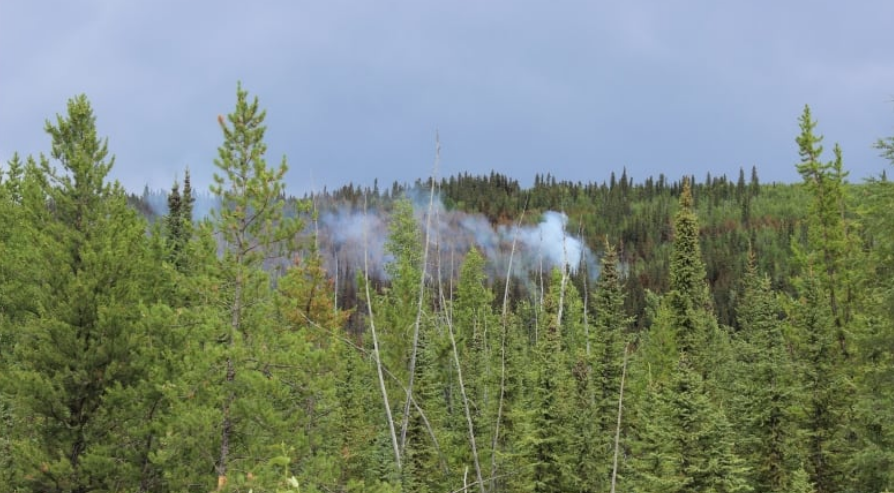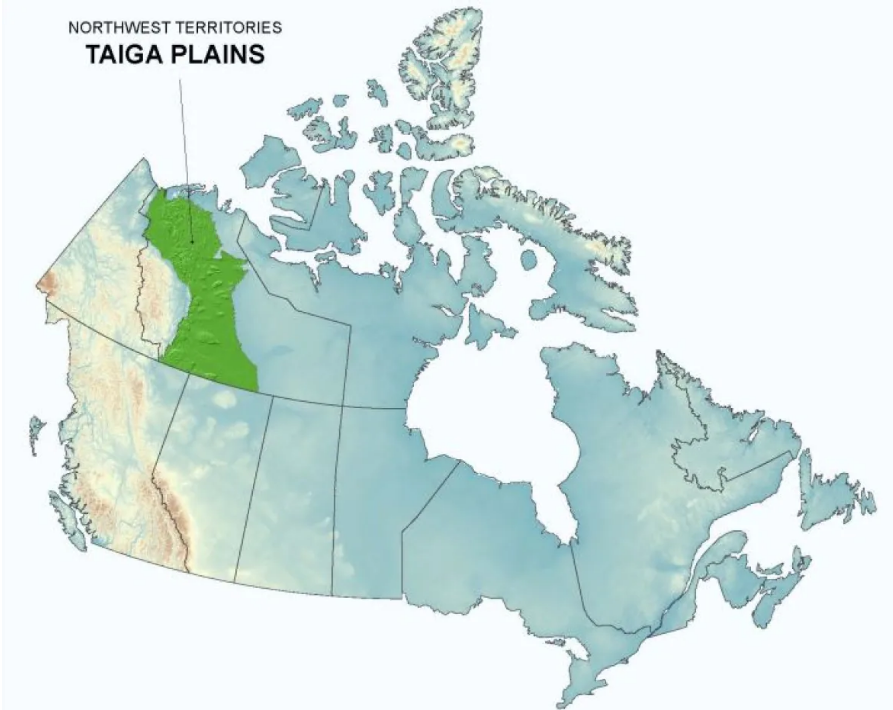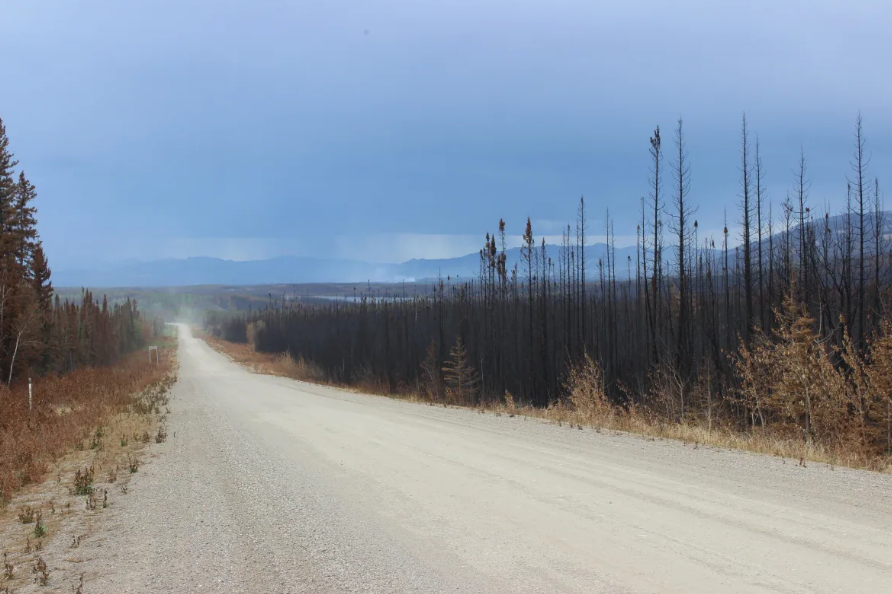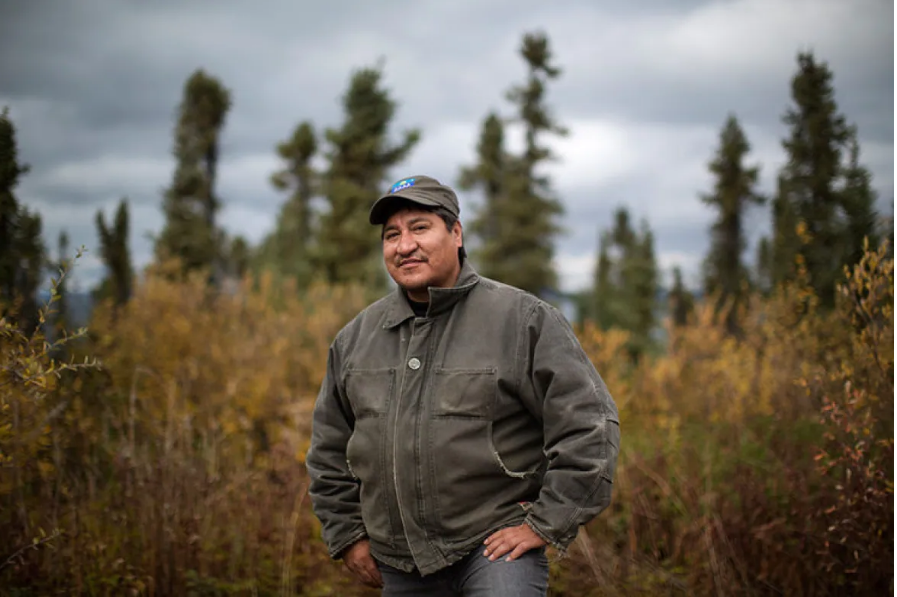N.W.T. forests absorb more carbon than territory emits — most of the time

Forests in the N.W.T. absorb way more carbon than the entire territory emits — most of the time.
“The forest is an enormous resource, and I am overwhelmed by it, to be honest,” said Jakub Olesinski, a forest ecologist with the territory’s environment department and one of the authors of a report on the state of forests in the N.W.T.
The purpose of the report, published by Natural Resources Canada (NRCan) earlier this year, is to provide a baseline of information about forests in the territory that can be used to measure future changes — such as those caused by climate change.
It includes details about carbon stored in the natural environment.
Carbon stocks, said Olesinski, are a “snapshot” of carbon in the forest at a given point in time. According to the report, the Taiga Plains ecoregion of the N.W.T., where most of the N.W.T.’s forests are located, had a stock of about 3 billion tonnes of carbon.

But carbon stocks change because, as Olesinski explained, forests are dynamic.
“[The forest] has a capacity to grow over time, which means it takes the carbon in, but it also breathes, which releases the carbon, and it decomposes, which also releases the carbon.”
He emphasized, instead, looking at how carbon fluctuates — measuring whether forests acted as a net source of carbon or a net sink of carbon in a particular year.
Kathleen Groenewegen, an inventory and analysis forester with the department, said from 1990 to 2019, managed forests in the N.W.T. (which are almost entirely in the Taiga Plains ecoregion) were usually a sink for carbon, sucking in, on average, 7 million tonnes of carbon dioxide equivalent.
In 2019 alone, managed forests — which represent just 17 per cent of all forests in the N.W.T. — sequestered 14 million tonnes of carbon dioxide. To compare, the territory emitted 1.6 million tonnes of carbon dioxide that year, which is about nine times less than what was sequestered, according to Environment and Climate Change Canada’s latest inventory report.
Groenewegen said on average, managed forests sequester four times more carbon dioxide than the N.W.T. emits.

There were only five years — each of them big fire years — where the forests emitted more carbon than they absorbed: 1994, 1995, 1998, 2014 and 2015. NRCan has said the 2014 wildfire season, the worst on the N.W.T.’s record, released 94.5 million tonnes of carbon into the air.
Wildfires not a threat?
Climate change is expected to exacerbate wildfires in Canada, but Olesinski and Groenewegen said they would not characterize fires as a risk to carbon that is sequestered by forests in the N.W.T.
They both pointed out that wildfires are a natural part of the ecosystem.
Olesinski also said there isn’t enough information yet to determine if the “fire regime” in the N.W.T. is changing. A fire regime describes patterns of seasonality, frequency, size, intensity and type of fire in a particular area or ecosystem.
“Our fire history only goes back to the 1960s. We’re working on expanding beyond, but it’s not … easy work to understand how it looked like a few centuries ago,” he said.
Olesinski said there are other pieces of information — like how much carbon is in peatlands and permafrost — needed to figure out when, if ever, the forest ecosystem in the N.W.T. could hit a tipping point and irrevocably become a consistent source of carbon instead of a sink.

Steven Nitah, who calls Yellowknife home, is currently the managing director for Nature for Justice Canada. He said the territory needs to consider how it can use the report’s data to manage ecosystems in a way that fulfils its responsibility to the global community.
He said the fact forests and other types of ecosystems in the N.W.T. can sequester so much carbon makes them “globally significant.” He said this fact should not be considered a licence for the territory to continue emitting the same amount of carbon dioxide into the air.
Nitah also said that there is “definitely” more carbon stored below ground in the N.W.T. than above.
Last year, a University of Alberta researcher told CBC News that peatlands cover 230,000 square kilometres of land in the N.W.T. and store 24 billion tonnes of carbon. Olesinski said the territory isn’t ready to report its own data on carbon in peatlands yet.
But it is something that’s being developed — all in an effort to measure future changes, and predict them.
Related stories from around the North:
Canada: Climate change affecting composition of forests in Yukon, Canada, study finds
Finland: Climate change casts doubt on future of Finland’s forest industry, Yle News
Sweden: Sweden to support forest industry following historic summer wildfires, Radio Sweden



